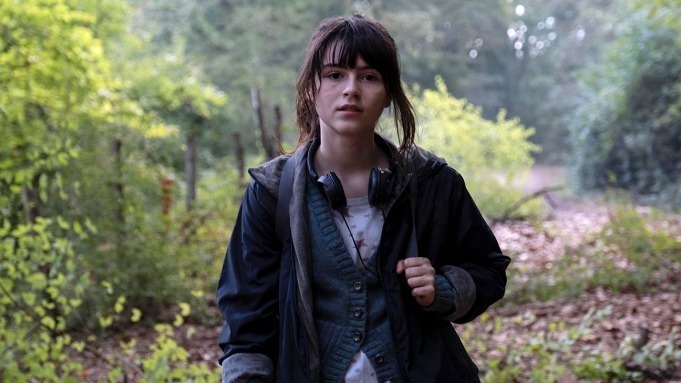Several novelties challenge pandemic fatigue with new twists on the post-apocalyptic genre
Yes there are something scarier than a dystopian novel about the future, is a dystopian novel about the future that was written in the past and that has already begun to come true. Gloria Steinem’s phrase in the prologue of The parable of the sower by Octavia E. Butler (Captain Swing) is the most pertinent in this post-covid world in which we continue to seek to give it a meaning and an ending that may not exist.
The prophetic ability of Dean R. Koontz, who anticipated the pandemic in The eyes of the dark (1981), is just one example of the power of fiction to propose futures so plausible that they end up being real. In their role as augurs, writers and screenwriters have the ability to illuminate, challenge or deconstruct our present pandemic.
This is demonstrated by series and books such as Station Eleven, Anna The MaddAddam, the closing of the homonymous trilogue of Margaret Atwood. In all these oblique looks at our present written years before the covid, the cause of different types of dystopian futures is a pandemic!
Survival is not enough is the explicit motto of Station Eleven, the HBO Max series based on the novel by Emily St. John Mandel that won the Arthur C. Clarke Award and was a finalist for the National Book Award in 2015. So much so, that the book and series renounce the already classic tale of repeated survivors until the zombie nausea for The walking dead and the like. The narrative is not without drama, but a warm humanist breath welcomes the viewer / reader from the first bars of this story of hope and redemption.
Behind that feeling of tenderness, melancholy and, at times, comedy Running through the series is Patrick Sommerville. The person in charge of The Leftovers, Maniac and this exemplary adaptation in substance and form, narrates with the help of directors such as Hiro Murai or Jeremy Podeswa the vicissitudes of a group of interconnected characters before and after the pandemic cataclysm.
The clock at the end of the world has not yet struck the last hour, and the few survivors have had to learn to fend for themselves in a world without technology, grouping in small communities like the Sinfona Viajera. This traveling group of actors and musicians is dedicated to tour without rest through the area of the Great Lakes, in the heart of the United States, performing works of Shakespeare as if their life depended on it. And, in a way, that’s the way it is: comedians are a last stronghold of vitalism. Ultimately, Station Eleven It is nothing if not a reflection, at times enigmatic, at times moving, on what gives true meaning to human lives, what we would choose to save if we lost everything.
For its part, the miniseries Anna, a Franco-Italian co-production available since December on Disney +, part of a disturbing approach: a virus called the red, because of the spots on the skin of those who contract it, it has killed all the adults. The disease is latent in children until they reach adolescence, so chaos has taken hold of what are no longer more than the decaying ruins of the recent past.
Niccol Ammaniti, director of the series and author of the 2015 book on which it is based, turns the imposing Sicilian landscapes in which the story takes place into a country of nightmares seen from the point of view of a child: a mixture of carnival , dream delirium and garbage. At times, Ammaniti indulges in realistic and macabre violence, even more unpleasant when dealing with truncated innocence. But sometimes he is also carried away by the tradition of the fantastic in Italian cinema. Anna seems at times in Lord of the Flies passed by Fellini and Sorrentino.
Few can speak of fulfilled prophecies and accurate dystopas with the authority of Margaret Atwood. The author of The Handmaid’s Tale He still does not have all his work available in Spanish, a gap that Ediciones Salamandra intends to correct with the publication of the trilogue MaddAddam. The homonymous installment, third and last part of this stira in an ecologist key, continues what was narrated in Oryx Y Crake Y The year of the flood, set in a post apocalyptic world that explores the social implications of bioscience and extrapolates the horrors of our current environmental trajectory.
Atwood already knew in 2003, when the first installment was published, that we’re heading straight for disaster, without steering wheel and without brakes, and hence this funny and scathing speculative fiction in which there is also room for affection.
It is likely that, as has happened with Utopa, the new television adaptation of Apocalypse but let Stephen King give it to him Y: The last man, Station Eleven, Anna Y MaddAddam fall victim to pandemic fatigue. It will be a mistake. Since we started this journey with a date, let’s put the finishing touch with another, Atwood vintage: People need stories because as dark as it is, a darkness with voices in it is better than a silent emptiness.
According to the criteria of
Know more
www.elmundo.es
George is Digismak’s reported cum editor with 13 years of experience in Journalism

